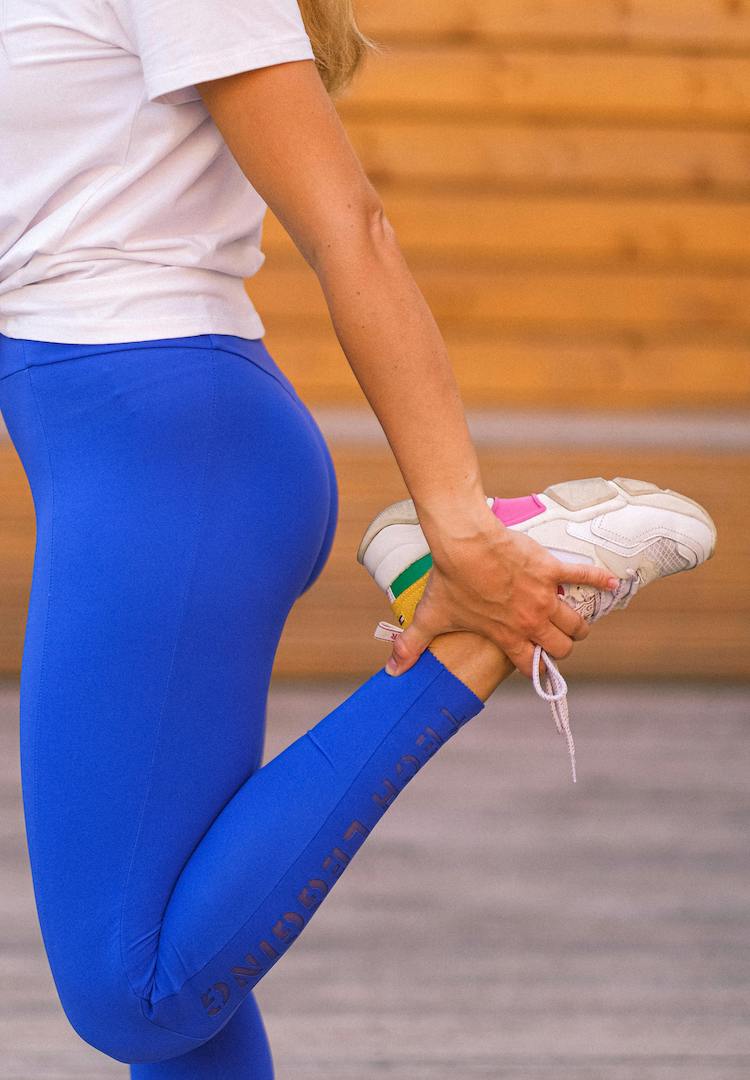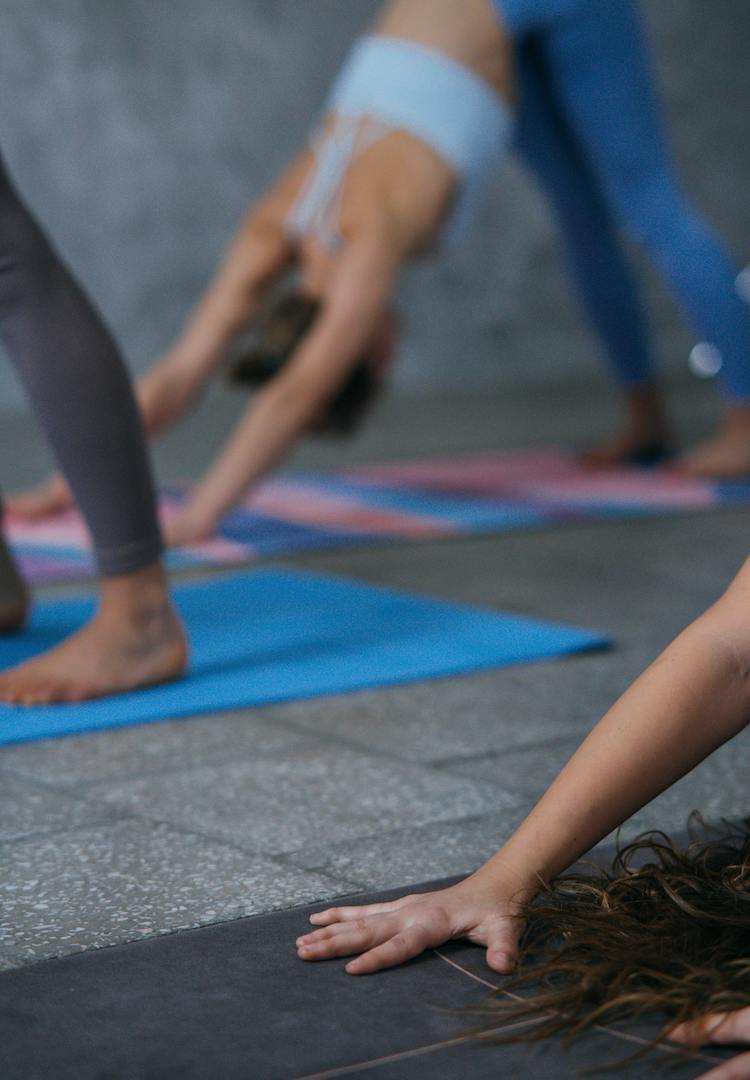6 easy stretches you can do from your desk
WORDS BY KAT CHRISOULIS
Sitting pretty.
When I got my first job in an office I let out a sigh of relief. Long gone were the days I’d have to work a 12-hour shift on my feet, running food up and down three flights of stairs and dealing with horror customers – and all for minimum pay.
Little did I know, the sore biceps and legs I’d battled in my hospitality days were a walk in the park compared to the aches I’d experience after hunching over at my nine to five. Within weeks I was whining about my tight hips, stiff neck and spasming back.
Interested to hear how others navigate the world? Head to our Life section.
My mum was quick to notice my repugnant posture, and reminded me that, sitting comfortably at 5’3, I should be taking all the spinal length I can get. Now I know I’m not alone in this battle. In fact, according to research, on average we spend 70 per cent of our day sitting, and two in five Australians complain that back pain interferes with daily activities.
Desperate for a solution, I asked FS8 Senior Athletics Programmer, Georgie Hallett, for some advice on what to do when your tech-neck starts to rear its ugly head. First and foremost, Georgie recommends using a standing desk where possible, or one that gives you the option to stand.
“Standing with the correct posture can help decompress the vertebrae of the spine reducing muscle stiffness and postural imbalances,” she says. However, if a standing desk is not an option, here are some stretches you can do from the comfort of your own desk.
1. Mountain pose
Commonly referred to as ‘tadasana’, mountain pose is the foundation of all standing stretches. It targets the full body to improve posture, alignment and balance.
How to do it: Start by standing with your feet together, hip-distance apart. Lengthen through the tailbone and reach the arms towards the sky, bringing your palms together. Hold for several breaths to open up through the ribcage, the sides of the body, and the outside of the pelvis. Your eyes should follow your hands to create subtle movement through the cervical spine.
“This is a dance between the breath and the movement of the spine as the arms reach long and return back to the sides of the body,” says Georgie. If done regularly, the mountain pose can strengthen the muscles in your thighs, abdominals, lower back, glutes, and around the knees and ankles.
2. Standing backbend
The standing backbend (or anuvittasana) belongs in the family of heart-opening poses and can increase energy flow to our respiratory, endocrine and cardiovascular systems.
How to do it: Starting in mountain pose, place the hands on the lower back (sacrum) with the fingers pointed downwards. Press the feet down, lift through the knee caps, and gently squeeze through the inner thighs and backside. Reach long out of the hips to create space between the spine before opening the chest towards the sky and leaning up and backwards into your backbend. Find the counter-resistance between the grounding of the feet and the lift off the chest.
“For more bend, press the palms further down towards the ground to open up the collar bone and support the lower back. This can also be performed in a low kneeling position,” says Georgie. By opening up through the front of our body, tension is released through our chest, hips and abdominals.
3. Seated twist
If standing stretches are not an option at work, the seated twist is the perfect candidate. By rotating the spine, this pose encourages spinal mobility and reduces any stiffness felt in the spinal muscles.
How to do it: Beginning seated (in a cross-legged position or on a chair), inhale and lift the spine tall, lengthening your back muscles. When you exhale, bring your right hand or elbow to rest on the outside of the left thigh into a gentle rotation of the spine. Hold for several breath cycles, gently increasing the lift and rotation each time. Unravel and repeat on the other side.
“A twisting pose can help stimulate internal organs through gentle massage and relieve the lower back,” Georgie tells me.
4. Ragdoll pose
A gentler version of a standing forward bend (or uttanasana), the ragdoll pose increases mobility and flexibility through the ankles, back off the legs and the lower back.
How to do it: Stand with your feet slightly apart and roll the spine down, each vertebra at a time, until you reach a hanging fold. Cradle each elbow with the opposite hand so that the arms are in a loose fold. Allow for the arms to fully relax and fall heavy towards the ground while reaching your sitting bones to the sky. Your knees should remain soft and slightly bent.
To release tension in the neck and shoulders, as well as the lower back, Georgie recommends nodding your head yes, shaking your head no, or finding a moment of stillness as “the spine and lower back muscles decompress creating space through the back of the legs”.
5. Kneeling or seated chest opening
If you’re starting to notice your posture is slumping after sitting for long periods of time, a seated chest opening stretch is a perfect tool to reverse any aches. By targeting the chest muscles and upper back, this stretch gradually opens up the chest and shoulders.
How to do it: Starting either on the ground in a kneeling position or seated in a chair, reach your spine long (lengthening between your tailbone to the back of your neck). Gently roll your shoulders forward several times and change the direction – this helps mobilise through the shoulders before your chest opening stretch. Placing your fingers on the temples of your head, bring your elbows into your eye view.
Try to squeeze under the armpits to activate your lats (latissimus dorsi muscles) and draw your shoulders down towards your hips. Lift the head, neck and chest and open the hands wide to a ‘goal post’ position. Return to the starting position and repeat, making sure you grow taller through the spine and remain relaxed through the chest on each repetition.
Georgie stresses the importance of repetition in this stretch, telling me it helps to “wake up the muscles in your back. Each time you can increase the lift a little higher”.
6. Wrist mobility stretches
Whether we’re frantically typing, texting or handwriting, our hands are placed under a lot of stress during those long days in the office. Because of this, it’s important that we don’t forget them when we’re showing the rest of our bodies some TLC.
How to do it: Relax through the shoulders and begin to circle the wrists in a clockwise then anticlockwise direction. Flex the wrists up and then down creating as much mobility through the wrist to alleviate tension caused by prolonged positions such as typing or writing. You may also find it beneficial to maintain a hold in the position of flexion and extension.
“The stretching of the wrist supports the stimulation of the hand and forearm muscles, [while] activating the wrist muscles encourages blood flow to this area… relieving the forearms and wrists of any muscle soreness,” says Georgie.
For more tips on office ergonomics, head here.










